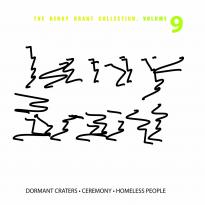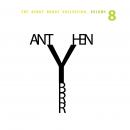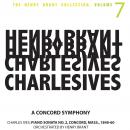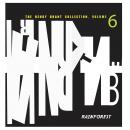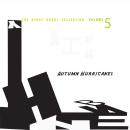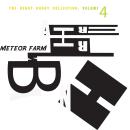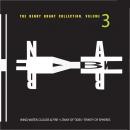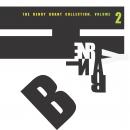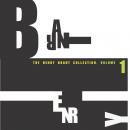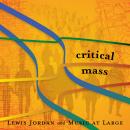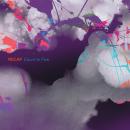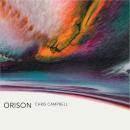Henry Brant Collection Vol. 9
Henry Brant Collection Vol. 9
Santa Cruz, CA
| The Henry Brant Collection, Vol. 9iTunes Artist's PageiTunes Album Page | |||
|---|---|---|---|
| Song Title | Time | Price | |
| 1. | Dormant Craters | 34:49 | |
| 2. | Ceremony | 12:30 | |
| 3. | Homeless People | 25:44 | |
We live in a volatile environment: physical and mental climate changes surround us. Complex times call for complex musical responses. These three Henry Brant works each deal in their way with such dense problems.
“Dormant Craters” is a shattering half hour of percussive eruptions. Designed for playback that might provoke the neighbors, there are 16 vibrant players spread far and wide: gamelan, steel drums, orchestral percussion… It’s an orderly and exotic global mayhem:
“Whether or not the sound of this piece has any connection with dormant volcanic craters, I am hardly in a position to say; but the craters I mean are the latent explosions we don’t know about yet, both in the human sphere and in the natural world.” – Henry Brant.
Of course, faculty meetings also have explosive potential. In 1954, Columbia University commissioned “Ceremony” for its Bicentennial. Brant based the structure on campus life: classes, meetings, committees, and chimes that divide the day into periods of fanatical study or strenuous relaxation. From time to time there are percussionists to represent “student political protest apt to explode unexpectedly at any moment.”
“Homeless People” for string quartet (performed at the Other Minds Festival), the insides of a piano and lone accordionist likewise proposes no solutions to humanity’s eternal problems.
The Henry Brant Collection, Volume 9, is a salutary reminder that if life were truly simple, we’d never have left C Major.
Early in his life as a Santa Barbaran, Brant’s music showed up locally, including a presentation of the memorable “Rainforest” that took place at (and around) the Lobero. He has since presented music elsewhere, globally, including his 2001, Pulitzer-winning Ice Field with the San Francisco Symphony. Another obstacle for Brant’s work is that stereo recordings don’t do justice to his multi-vantage-point music. Thus he’s had little interest in pursuing documentation of his music. Lately, though, Brant’s discography has grown dramatically, thanks to a recording series on Innova (the St. Paul-based label arm of the American Composers Forum). On Volume 9, we hear a few more decidedly abstract pieces — “Dormant Craters,” “Ceremony,” and “Homeless People.” In these, we’re admittedly getting a stripped-down version of the real, spatial thing, but still, the rigor of his creative voice is intact — and captured for posterity.
- Josef Woodard, LA Times
The mammoth challenge of realising Brant's music on CD has been tackled head-on by the Innova label.
- Philip Clark, Amazon
Dormant Craters (1995) is a lengthy (circa 35 minutes) one-movement piece for percussion, using a wide array of instruments including exotic ones: gamelan ensemble, Chinese gongs, Chinese blocks, Thai "button gongs", cowbells, a three-octave chromatic set of hand bells and even three pairs of pot covers, which Brant has sawed at one point (maybe at 17:46, where you hear sounds that evoke a rattle or the ringing bell of an old broken-down alarm clock, or again at 33:35). Among the more traditional instumentarium there is also a steel drum group, a set of Jazz cymbals, another set of Jazz tom-toms, timpanis, glockenspiel, chimes, vibraphones, crash cymbals, snare drums. The textures are dominated by the sonorities of metal percussion. Overall Brant aims at color rather than (like, say, Varèse's Ionisation or Xenakis' Psappha) pulse, beat and unleashed energy - although there are moments of the latter. In consideration thereof, the piece's length and apparent wandering is part of its essence. It is an aural journey, very ritualistic, it could be the music to some strange (to our ears) Far-estern opera. I find it fascinating and entertaining, but it probably will not be to everybody's liking, even to those with an ear for contemporary music.
Ceremony (1954) is interesting for being one of the rare early compositions of Brant to be included on this Innova series (other than the small and not entirely significant short pieces included in volume 8, but many of those were revised in 1984). Indeed the only regret I may have with the collection is that it has featured only recent works of Brant, all dating from the mid 1970s and after. They are so stupendous, I wish we had been offered a more complete picture of Brant and of his compositional development. Ah, abundance of riches. Ceremony is an early example of Brant's experimentation with spatialization. Here we have four widely spaced trios, respectively solo violin & 2 flutes, solo oboe & 2 clarinets, solo cello & 2 bassons, and piano four-hands, timp and xylophone. Located in various other spots, chimes-glockenspiel, soprano & trumpet, mezzo & trumpet, tenor and trombone, baritone and trombone. Of course, much of that is lost on stereo records, but as I commented in my review of volume 3, it only proves that there is more to Brant than just spatialization - or else it would be a mere gimmick. Ceremony is more openly lyrical than what you might have expected of Brant, but in fact he's never abandoned that lyricism, and many of the hallmarks of his later style are already present: the brilliantly colored and chime-like pounding piano, harking back to his teacher Antheil and, further back, to Stravinsky's Les Noces, the taste for softly colored bell sounds that he may have borrowed from Cowell, the beautifully lyrical and quasi-ritualistic melismata attributed to the singers and, here, violin, oboe and cello as well - the oboe opener at 1:49 is as pastoral as anything you will ever hear, and the weaving of the woodwind dominated instrumental groups sounds something like an atonal Milhaud at times.
So, Brant had to write a string quartet like everybody else, but he wasn't going to write a string quartet like everybody else's. He has his four strings widely separated in each corner of the hall, and adds a piano, alone on stage, playing at times (not always, despite what the notes seem to imply) directly on the strings (with percussion mallets say the notes, but also with the hands, it seems to me). There is also, as an afterthought (the piece was composed in 1993 and revised in '97), an accordion in the distance. And he calls it "Homeless People" - title unexplained by the liner notes. Architecturally (I'm going by ear, the notes are disappointingly scanty on this one), the piece is built of nine sections playing without break (unfortunately not indivually cued), each concluded by a piano flurry, each developping a specific idea and playing mode. I think they are monothematic as well, but the motif is at times so distorted or tossed between the instruments that it is hard to be sure. The way Brant uses the piano strings is at times directly derived from Cowell (the passage at 7:59 in the fourth section is strongly evocative of "The Banshee"); elsewhere (section 3, 4:38 onwards) the jagged and disjointed piano and string pizzicatos point to Nancarrow's Player Piano studies. The strings are sometimes pointillistic, with seemingly independent or overlapping lines creating a dense and dissonant counterpoint (the fine stereo separation helps perceive that) which fleetingly brought to mind Ligeti's Second Quartet or Horn trio (at the beginning for instance). Brant has them use a wide gamut of playing modes in order to produce eerie, ghostly, sarcastic, tormented sounds. Much of it is restrained to pp nuance and limited dynamics, at the edge of nothingness, recalling European composers like Salvatore Sciarrino, Helmut Lachenmann or Gérard Pesson, but also Cage's String Quartet. And the accordion at a distance adds its own eerie and ominous colors, sometimes intoning whiffs of ballroom music (20:30).
- Discophage, Amazon
